I’m still reveling in the excitement of the weekend, when people around the world experienced the best display of northern lights most of us have ever seen.
Leading up to this event, reports of a giant sunspot releasing a succession of strong CME’s, or coronal mass ejections, caught my attention and that of several of my photography friends. We follow websites like swpc.noaa.gov to follow solar activity and to access NOAA forecasts for upcoming aurora chances, and share our thoughts with each other about plans to photograph them in a group chat called ‘Photography Nerds’, which seems very appropriate in this context.
I think many of us treat these forecasts with a healthy dose of skepticism. There have been many times when forecasts like this simply didn’t pan out, and, even if they did, New England was hopelessly stuck in the clouds. However, with multiple CME’s coming our way, and forecasts for partly cloudy skies, it did seem likely that we would see something.
I’ve seen northern lights a few times before, the best being in Iceland, but also a few times in Maine, including during this display that I captured very close to home at New Meadows in West Bath, which happened to occur just a few days after the birth of our first child.
I’ve always been fascinated by what’s going on in the sky, and those who know me and have followed my photography know this very well.
So, when Friday came, I was paying attention. Starting in the morning local time, reports came in of beautiful northern lights in places like New Zealand, Asia, and Eastern Europe. As the day wore on, we were treated to a cascade of images of pink glowing skies around the world. The excitement leading up to dark was incredible. Again, storms like this have happened before and faded before dark here in the US, so I tried to temper my hopes, but it seemed likely there could be some staying power with this one.
I now had decisions to make. I wanted to get out early and travel either north to the mountains, or east to Acadia, thinking of the views of Katahdin from Abol Bridge or NEOC, or the Bubbles from Jordan Pond or Ocean Drive from Otter Cliffs. The reason I was thinking about going to these locations is because almost every time we have northern lights, they’re on the distant northern horizon and require very dark skies to be seen.

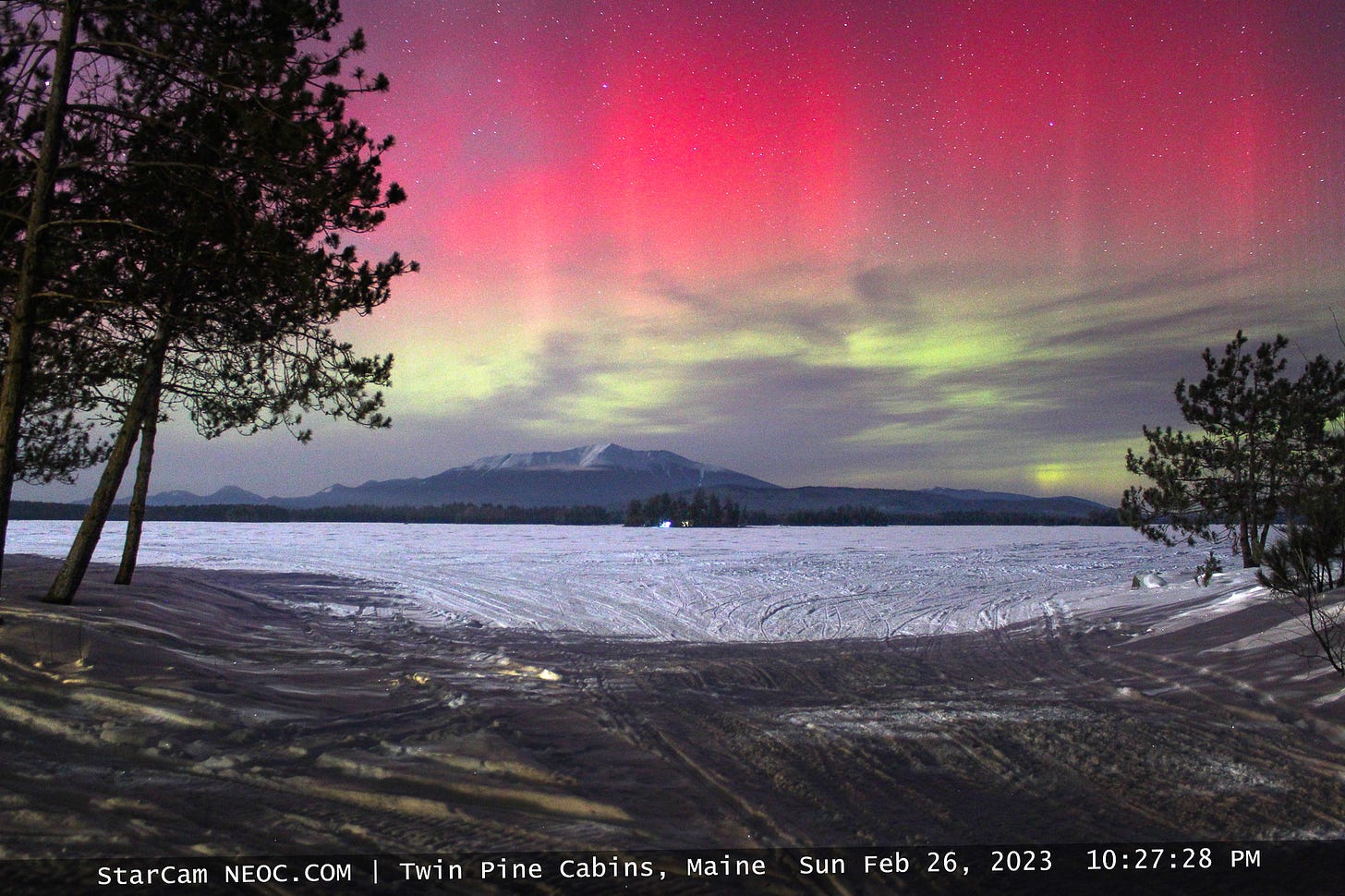
Thankfully, in hindsight, I had a number of obligations at home that kept me home until the last minute.
As the day wore on, I had a few other options in mind closer to home. The first was to drive up to Camden, where I’d photographed the comet NEOWISE years earlier, the other was to try my luck at Pemaquid, where I’d actually photographed the aurora before, but been unhappy with the results.
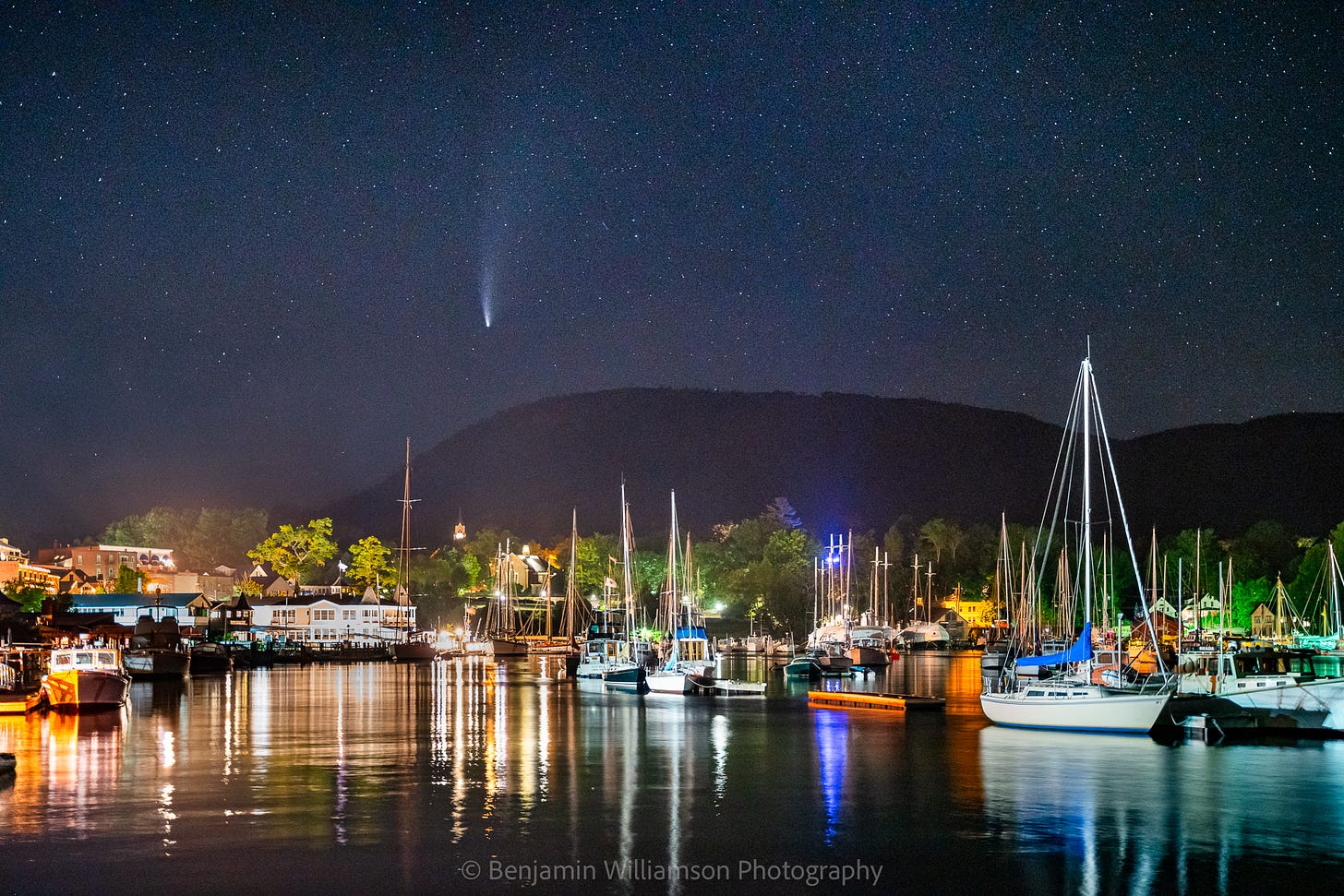

The last option in my mind was to drive down to Portland Head Light in Cape Elizabeth, probably my favorite photo location, and hope for a strong display. Because this is so far south, I figured I would be climbing out on the rocks to the south of the lighthouse, trying to get a vantage point to the north, and fighting with terrible light pollution.
After dinner and putting the kids to bed, I finally got to leave around 8 PM. I felt like I was going to be late, but thanks to the exceptionally long days right now, by the time I got to PHL, it was just getting dark.
As I walked into the park, I got my first glimpse of a glow in the sky to the southeast. Southeast, you say? Yes, this was an unusual direction to spot the northern lights. When I followed the glow up into the sky, I could see that it arched overhead and continued on to the western horizon. These darn things were going to be straight overhead and all around us!
I couldn’t believe it and was insanely excited for what I knew was about to happen as it got darker. I got to the northern overlook and took my first exposure.
I thought this was already the best northern lights photograph I’d ever taken, and that the display could stay like this and I would be happy. There was not much shape, texture, or detail to the lights, but a beautiful magenta band contrasted with a more typical green band and made for a surreal photograph.
I took a photo of the back of my camera to share with my friends, and then uploaded it to Twitter to share with the weather and astronomy nerds that I interact with there. Twitter is great for sharing breaking news and events, and being one of the first images of the northern lights in North America, since Maine is the first places to get dark, my image quickly went viral. Sadly, it looked like this:
Haha, what I see as a very crappy quality image seemed to matter little to most non-photographers and casual observers.
It caught the attention of a CNN producer, somehow, and I got a text message asking if I would do an interview live on the air. I wanted to say, no thanks, I’m busy right now, but knew it was great opportunity to be a part of the conversation around this event that was being enjoyed by millions of people around the world. Maybe I could get people excited to go outside and gaze in wonder at the sky, to marvel at the universe and this beautiful planet we are so blessed to live on. This really was a moment that showcased one of the best parts of the human experience.
I was just a small part of it, but I knew my perspective would bring a lot of joy to the conversation because that’s what I was feeling. The producers wanted me to get to a location where they could see my face to do a video call, but that would have meant leaving, so thankfully they allowed me to do the interview over the phone while they showed other screenshots of the back of my camera. It was a lot of fun talking to the two engaging and kind hosts. If only all the news were like this…
One of the things we talked about in the interview was the appearance of the northern lights to the naked eye. Many of you know, and noticed yourselves Friday night, that the images that cameras makes of northern light don’t really look like they appear to the human eye. There is a giant conversation to be had about how the camera differs from the human eye, but for the sake of this post, I’ll keep it brief.
To my eyes, the scene looked more like this:
Does that take away from the beauty of the northern lights, or the enjoyment of photographs of them that look nothing like ‘reality’ ? I don’t think so. I like to capture how things looked in person, but also how they made me feel. I like to accentuate color and contrast and make other adjustments, but stay within the realm of believability. I talked about this at length in an earlier post.
That said, I also love that the camera can see so much more than I can, especially at night and during situations like this. The camera opens open a world of beauty and possibilities that can can be even greater than whatever ‘reality’ it attempts to decipher.
I’ve gone back and forth a bit on how to edit these images, but generally, I’ve done it as I do all of my photos, trying to distribute the tones across the range from bright to dark evenly, with most of the northern lights falling in the middle range, the sweet spot that gives the best tonal values for color and contrast. When edited that way, it no longer looks like night as we see it. It looks way, way better.
Like I said earlier, I would have been perfectly happy if the northern lights had continued on as they were, because they were already amazing. I decided to go over to the other side of the lighthouse, and photograph the views I’ve photographed countless times.
This was alright, but I wasn’t liking it as much as previous view from the other side, so I moved further down…
Now things were getting more interesting, and the aurora started to change and kick into high gear. What had been a pretty featureless mass of green was now taking shape into beautiful ribbons of light and starting to move around.
Then the sky erupted, and the aurora blossomed overhead in an incredible corona, seeming to emanate from a central point in dazzling light and color. I quickly made my move to take advantage of an opportunity that came to mind.
I was excited to photograph this lighthouse, which I’ve come to know so dearly, from a new and interesting angle under the best possible scenario for it, looking straight up the tower. The inspiration for this was from my friend Adam Woodworth, who had photographed West Quoddy Lighthouse like this, not with northern lights, but the band of the milky way galaxy behind, in one of my favorite images of all time.
As I stood under there, another photographer who was there at the time, Stephen Fabricius, came up and stood alongside me. As it unfolded, we were both gasping in wonder.
I probably should have taken a time-lapse to showcase the changing patterns and colors, but I’m a still photographer at heart, and I knew that I was capturing images that would be massively important to me personally and in my career.
After gawking at this for what seemed like hours, but was really just a few minutes, I noticed that the lights were completely surrounding us from horizon to horizon, and were doing incredible things everywhere we looked. My next move was to go back to this more traditional view, an old favorite, and capture what looked like sheets of green rain falling from the sky.
Then I walked back to where I started, and things escalated again.
Different colors shimmered across the sky in waves and curtain formations. The colors result from the way the energetic particles from the sun interact with the upper atmosphere at different altitudes. Green northern lights, the most common, occur when particles interact with oxygen between 75 and 110 miles in altitude. At 60 miles and below, an interaction with nitrogen will cause pink northern lights. Above 120 miles, interactions with oxygen spark red aurora. It was amazing to behold them all.
I call this next image ‘When it All Turned Red’, because that’s exactly what it did.
It seemed a little gratuitous at this point, but it really just kept changing, and I kept walking around in absolute wonder.
From here, I was finally ready to move on, and drove just a little down the road to another favorite location, Spring Point Ledge Lighthouse.
The lights were just green at this point, and I wasn’t super impressed after what I had just seen. Spoiled! The best part about this stop was seeing a lot of other people out enjoying the show and even running into my friend Jennifer Egan! From here I wanted to stop at Bug Light and take in the Portland Skyline, but I was crashing hard from all of the adrenaline earlier. I hit the road home.
One of the most surreal parts of the night was actually driving on 295 and having the aurora dancing through the sky in front of me through the windshield. You’ll be glad to hear that I didn’t take photos of that, haha!
When I came through Brunswick, I knew I needed to stop at Fort Andross and walk across the street to the little park that looks across the Androscoggin River at the Green Bridge and Bowdoin Mill in Topsham. I worked at the Sea Dog for 7 years, and with the historic architecture of the mill and Green Bridge, which will be a part of history soon, I knew this was going to be an important capture for me.
The water was rushing nicely and the northern lights were arrayed in the sky like green curtains, moving like they were slowly blowing in a breeze. It was, again, unforgettable.
From here I had another stop at New Meadows in West Bath, where I attempted a time lapse of the reflection over the water, and then finally drove home around 2:30 AM. At that time, the northern lights started to flare up big time again and were overhead in another incredible corona, this one cool blue and green and very slowly moving, unlike the pulsing rainbow tie-die corona we saw earlier in the night.
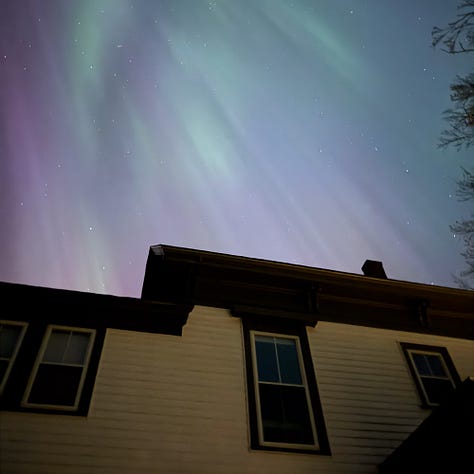
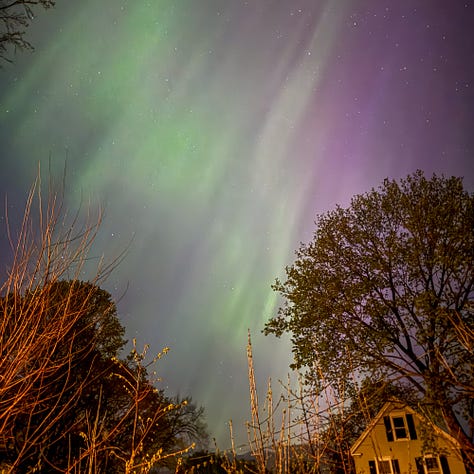
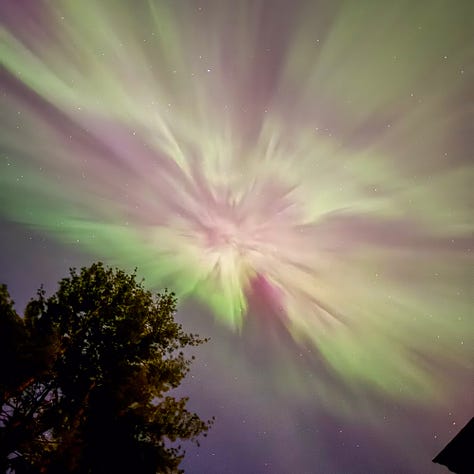
I took images of it above my house for the memory bank, all with my cell phone, but mostly just sat there slack-jawed looking up and really taking it in without worrying about making any more photos.
It was fine watching them alone, and thankfully my wife had gotten to see them earlier in the night at home, but I really wanted our 6-year-old daughter to see it. After all, wasn’t it childlike wonder that I had been feeling all night?
I went upstairs, woke her up and pulled her out of bed, slung her over my shoulder, and went outside. I tried several times to get her to look up at the sky, saying "look, Charlotte, look!" But all she said was, "It's freezing out here", and after a few minutes of walking around and trying to hold her chin up, I gave in and took her back to bed.
I finally went to bed myself after coming out one last time and looking up in wonder. I think it was around 4 AM.
The next morning, I asked Charlotte, "What did you think about the northern lights last night?" Her reply was, "What are you talking about?"
Thanks for reading! You can order prints of the images above HERE.
Join me on one of my photography workshops in 2024! I can’t promise any more northern lights, but you can see the schedule and sign up for trips HERE.

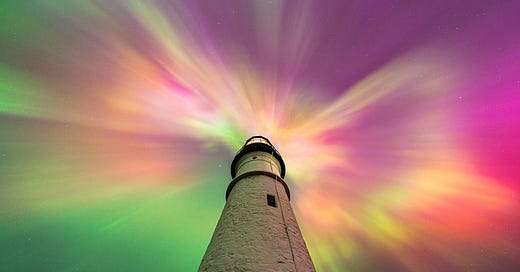


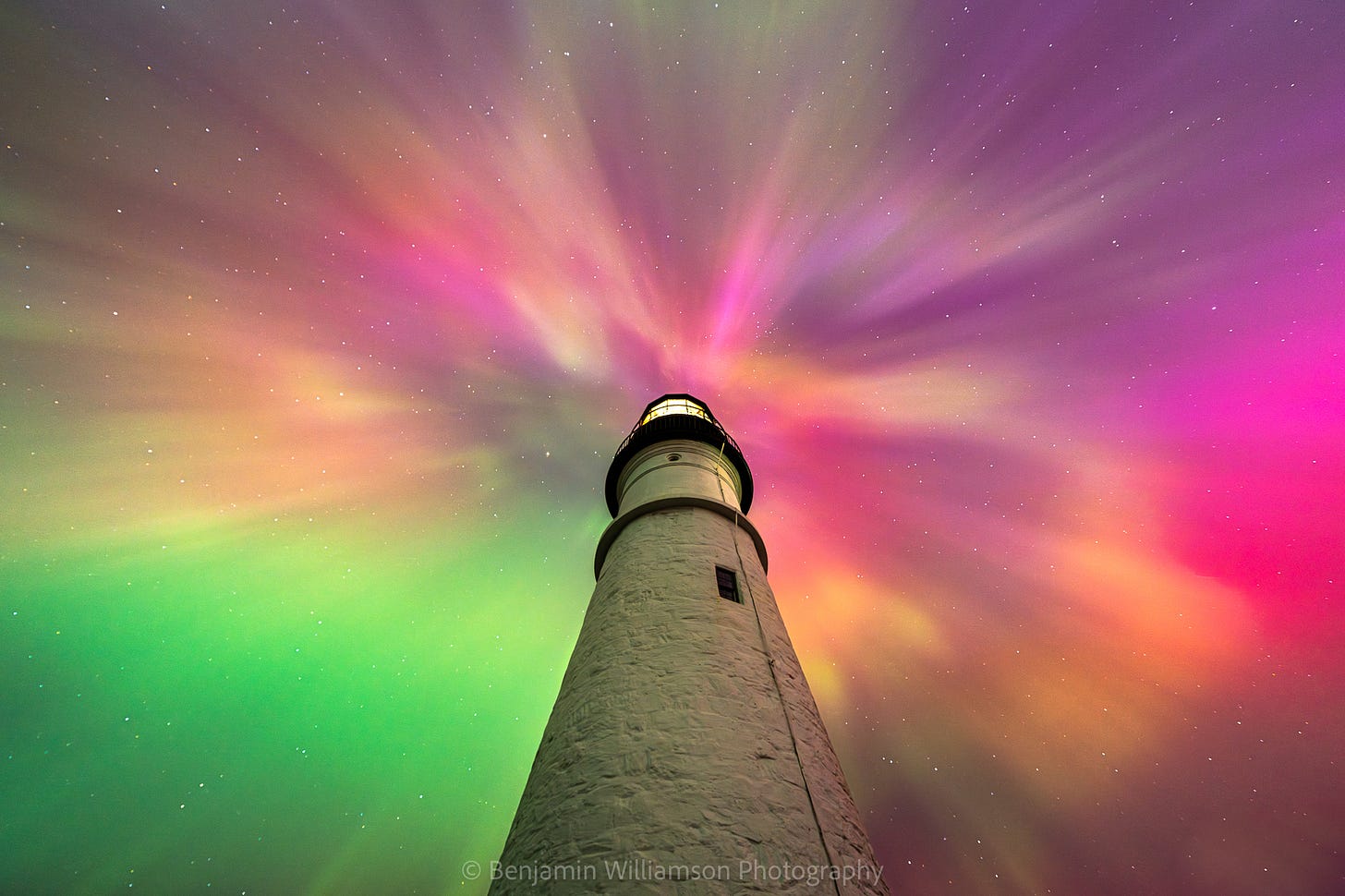
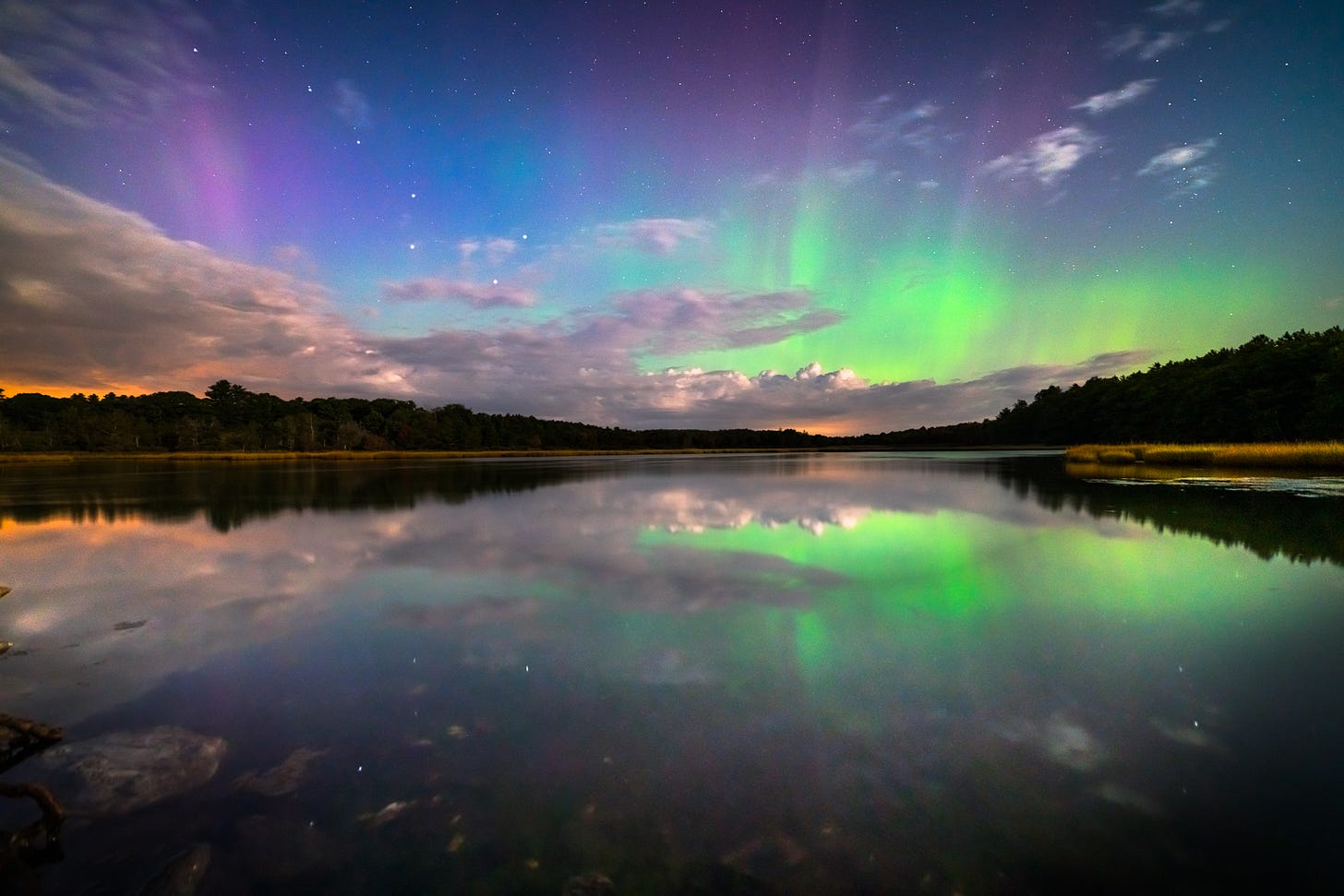
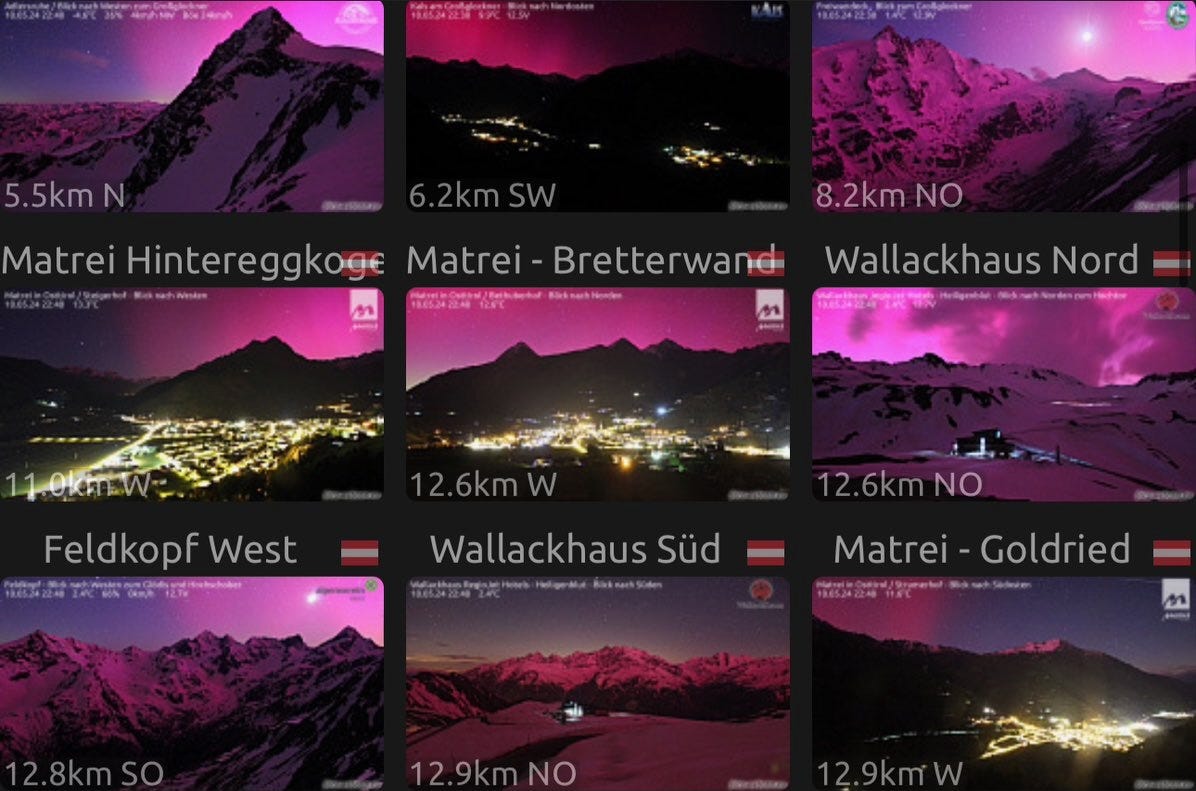
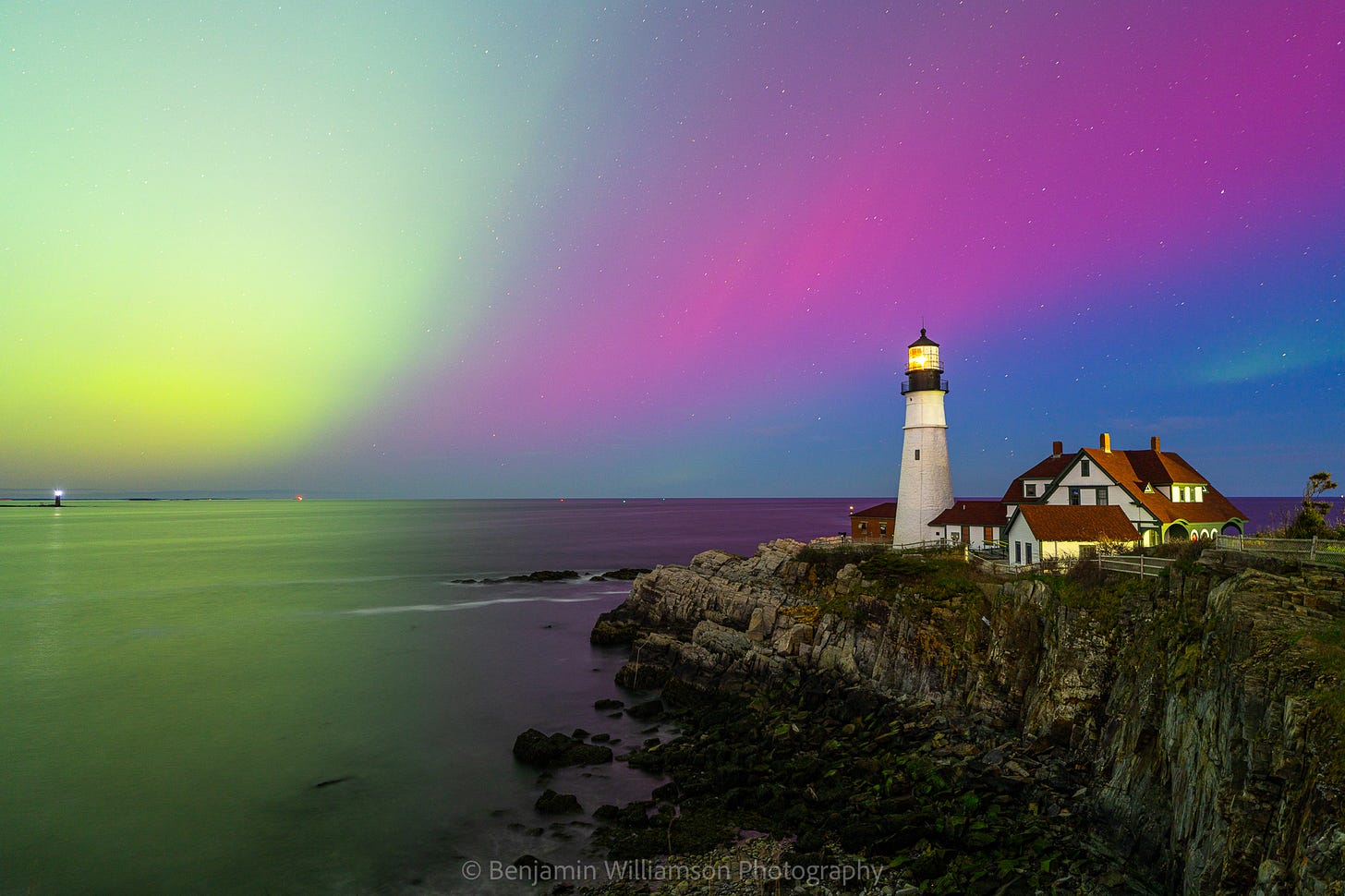
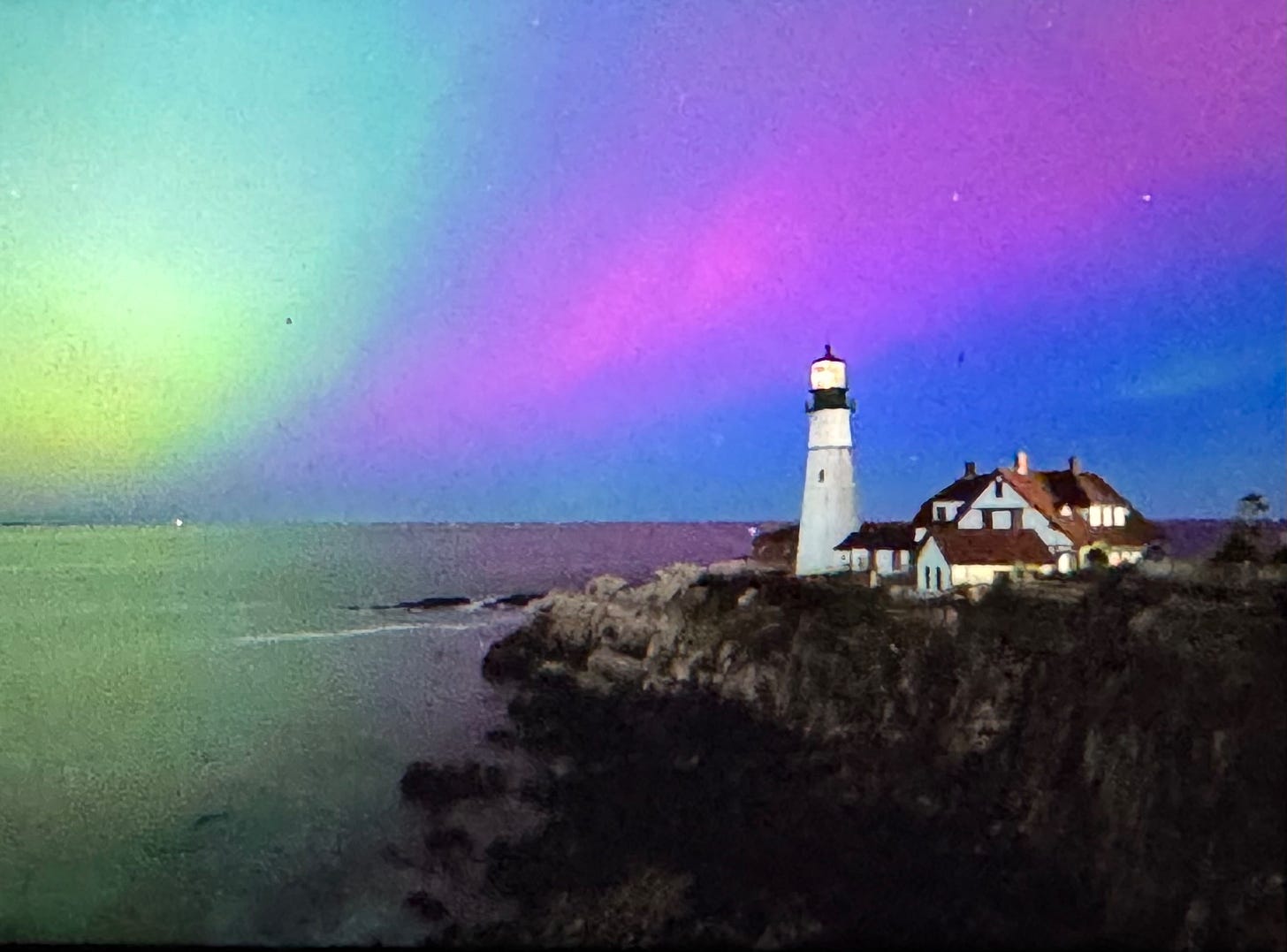
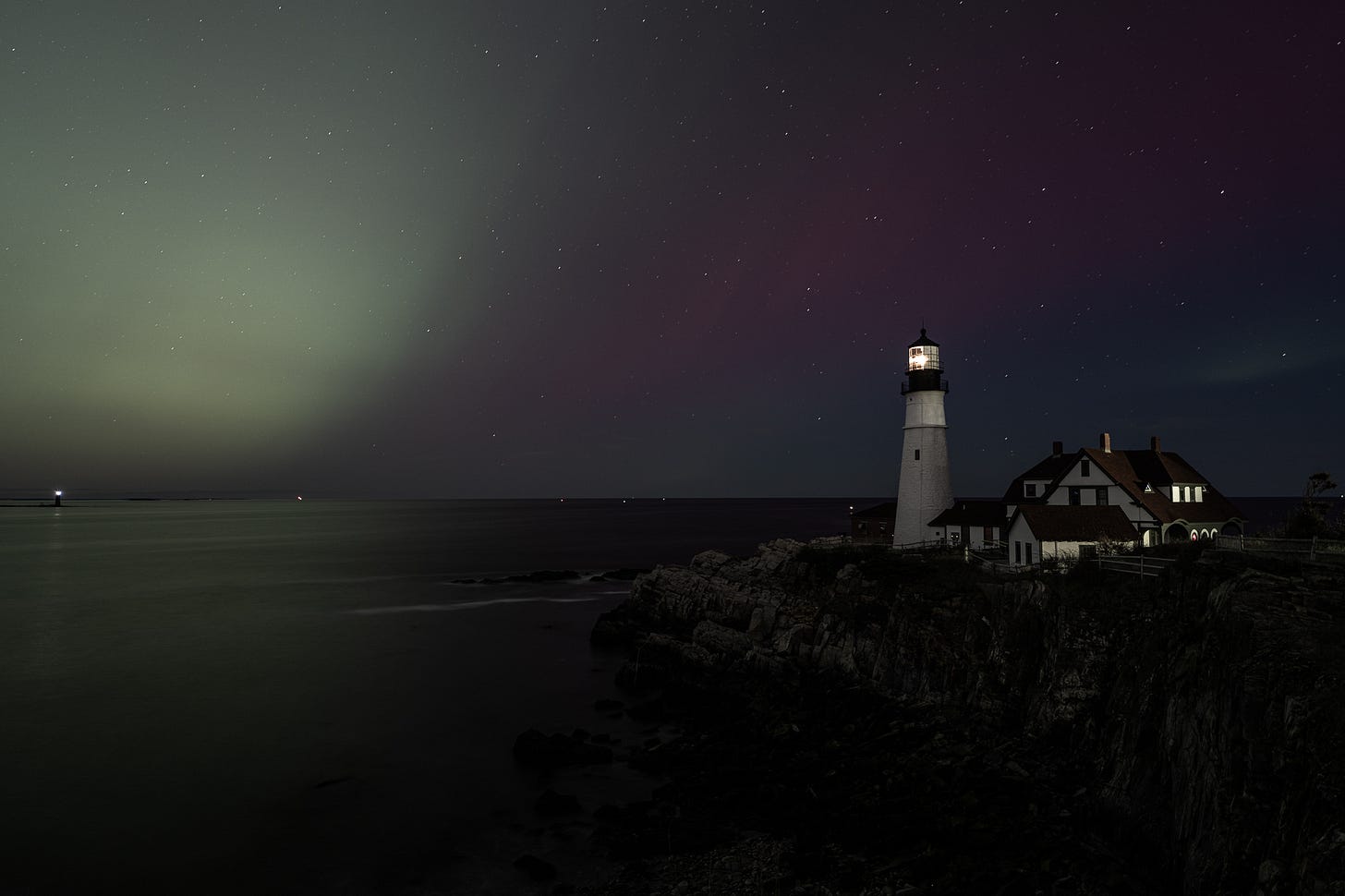
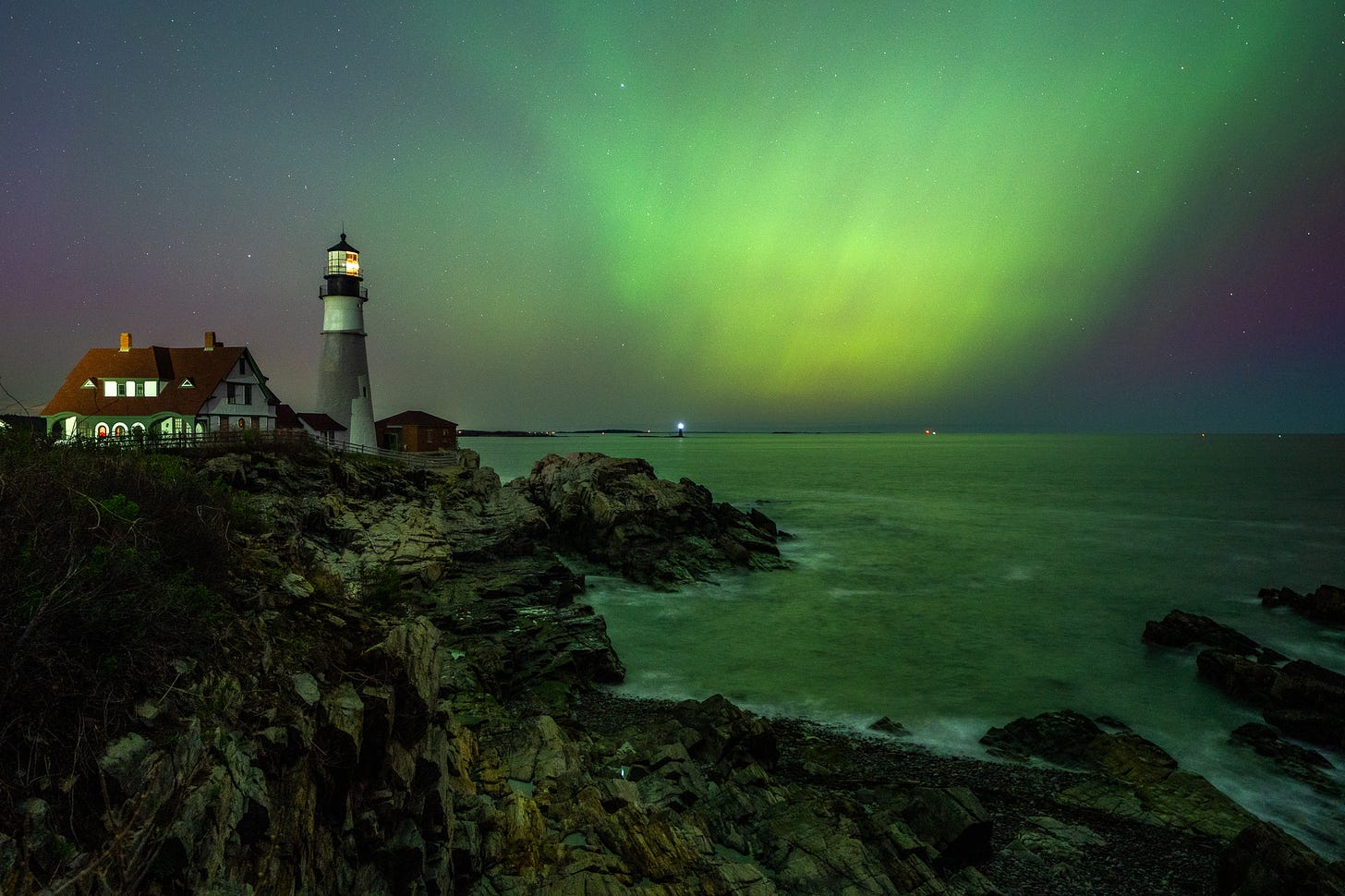

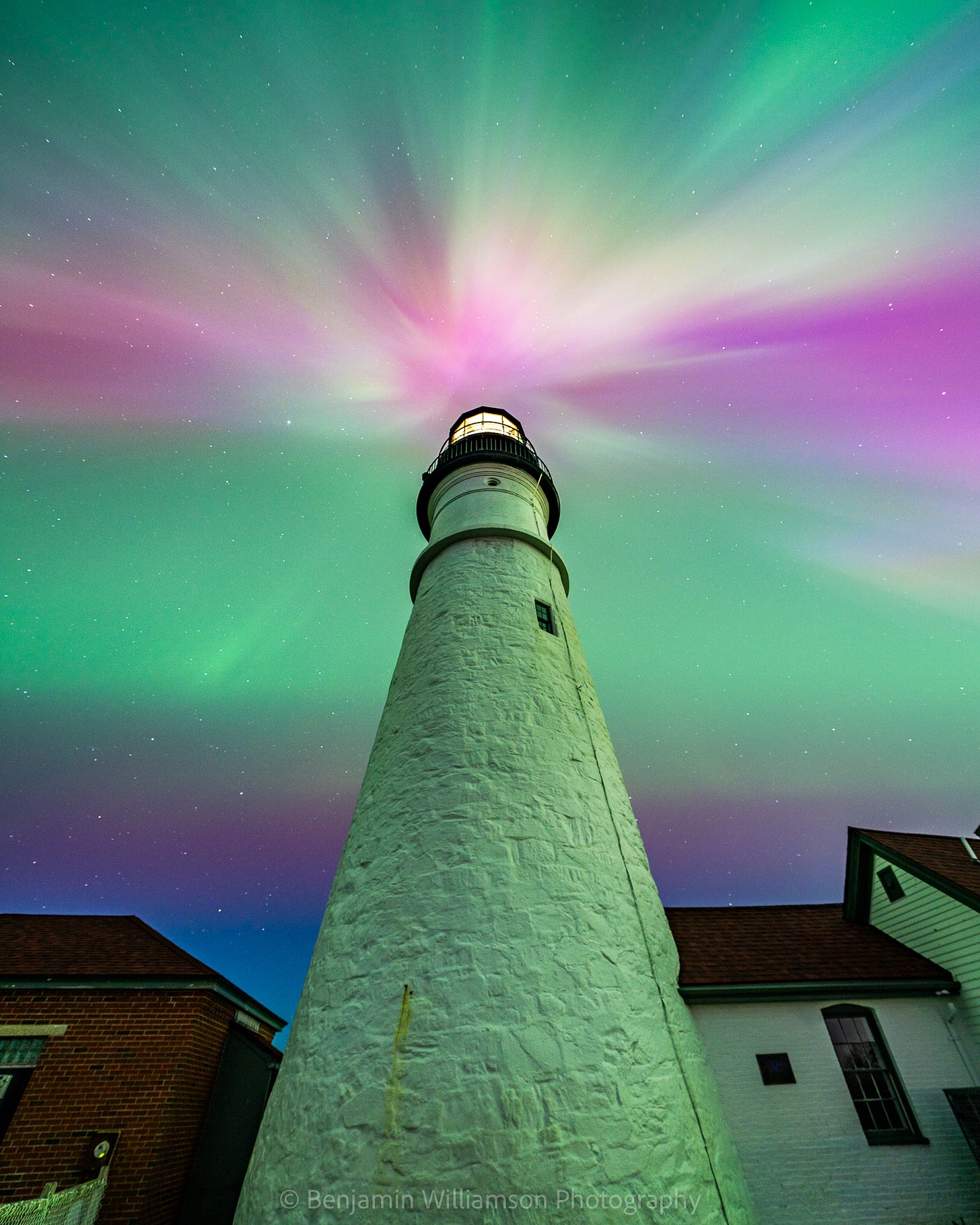
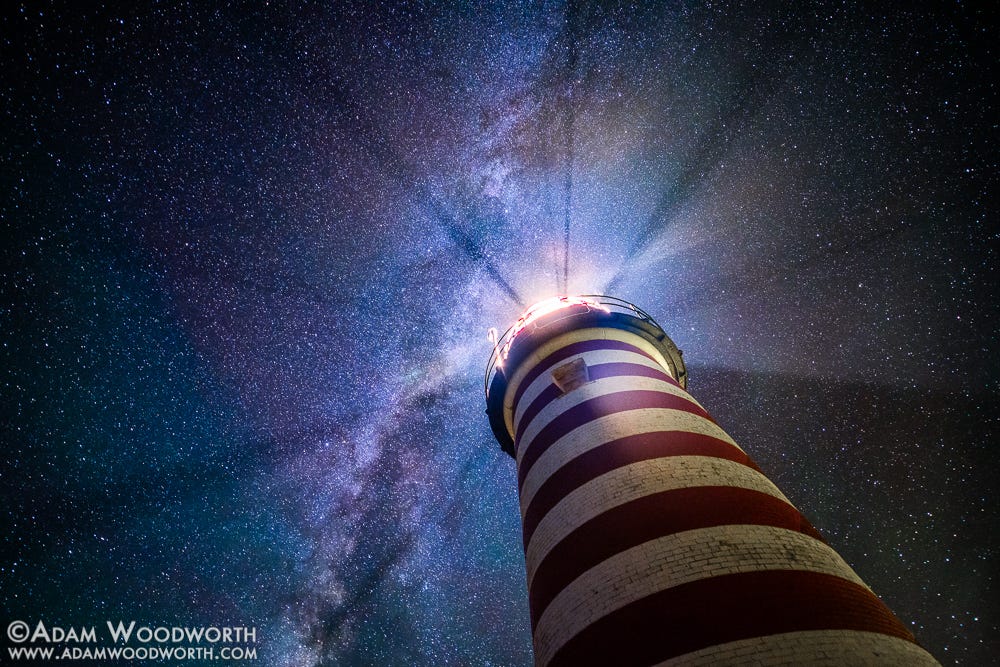

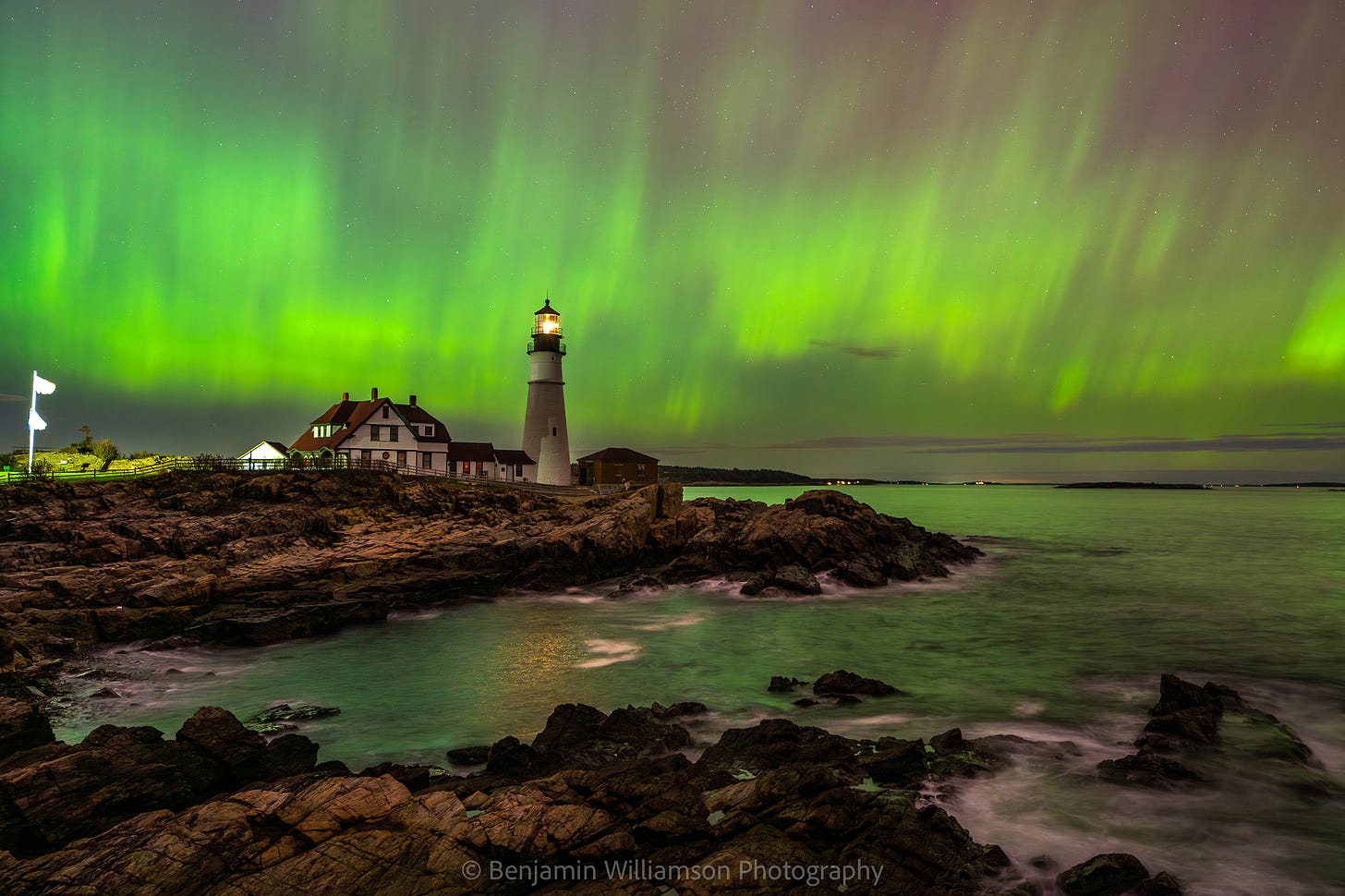
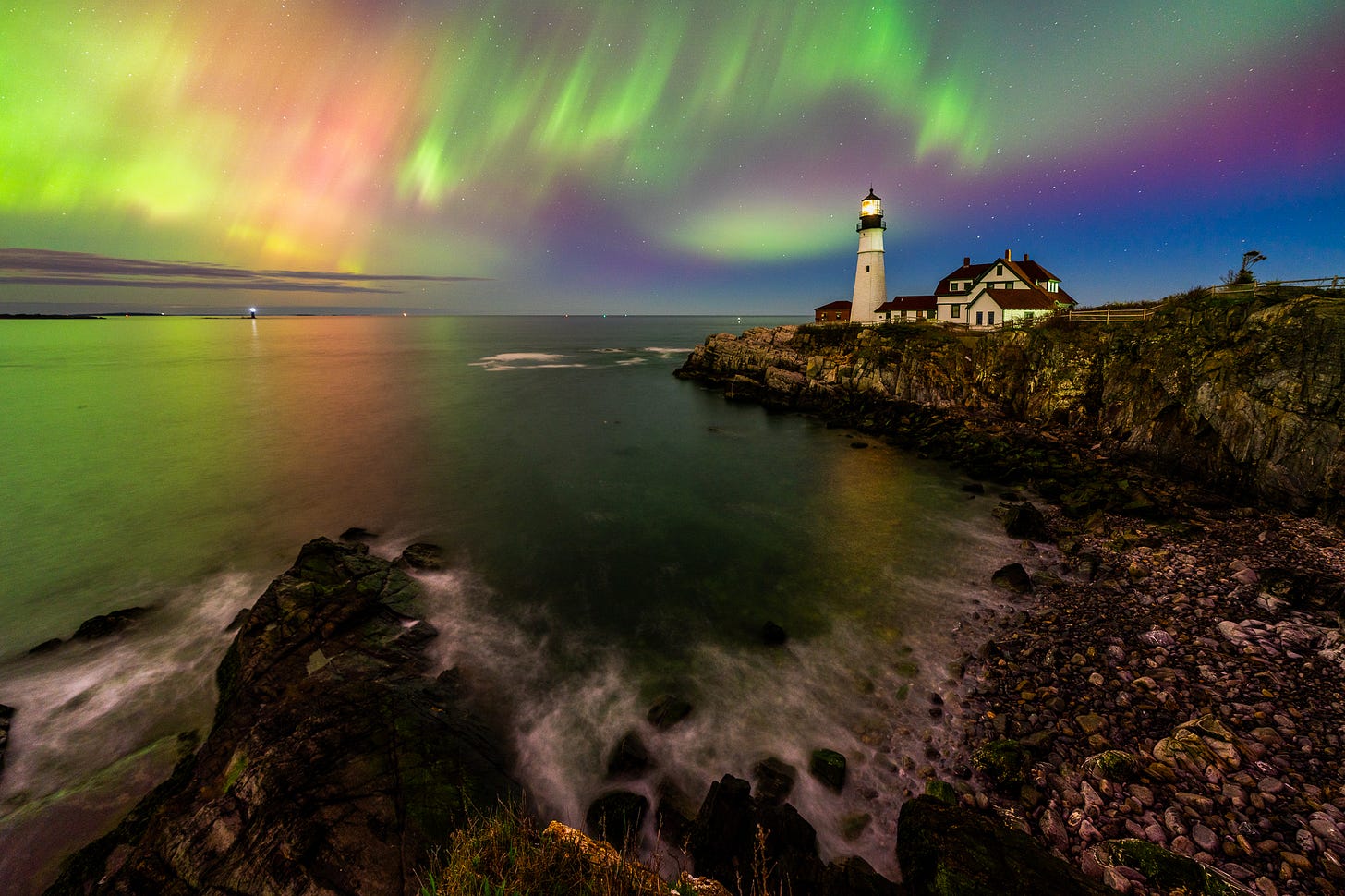
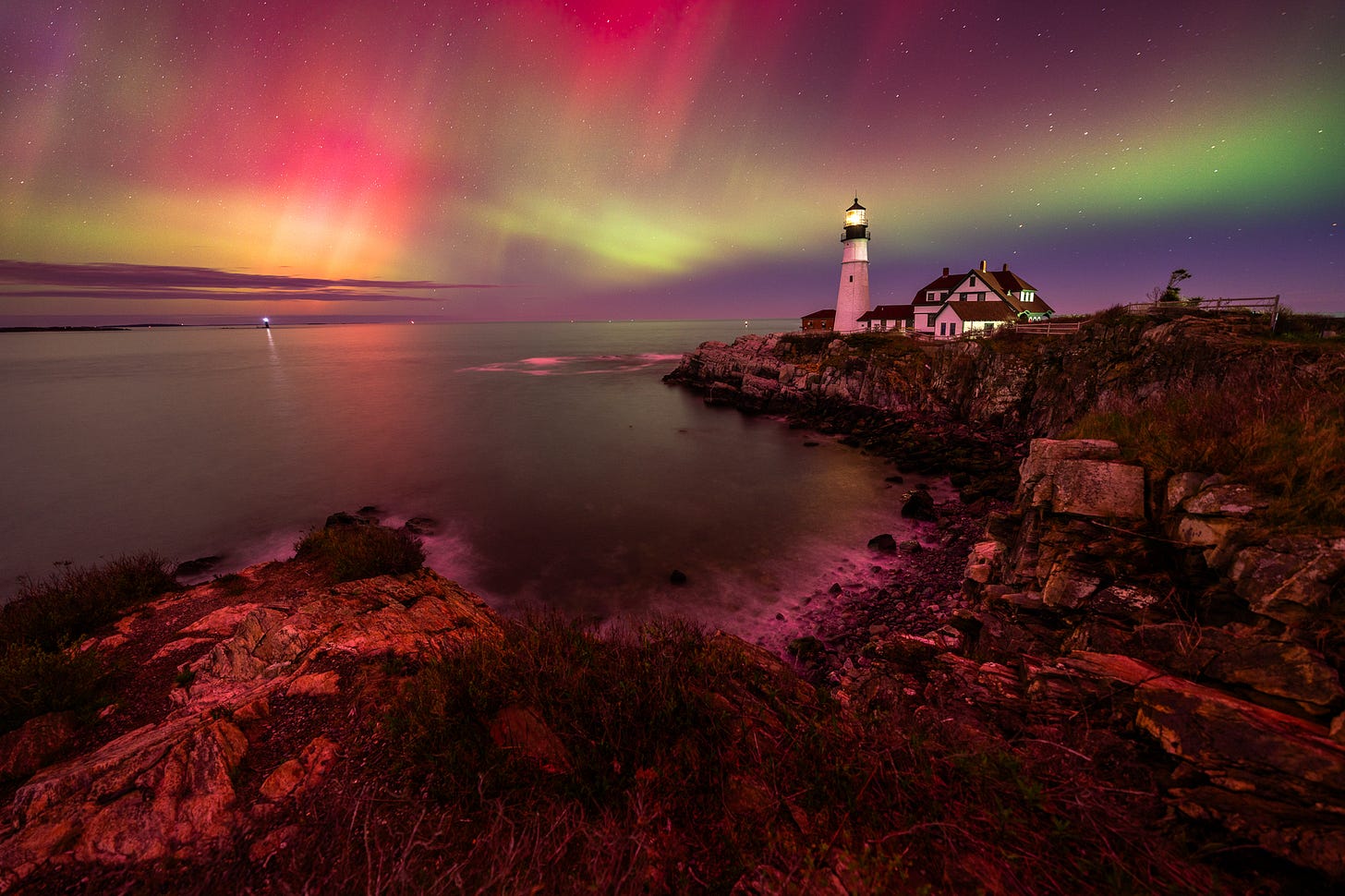
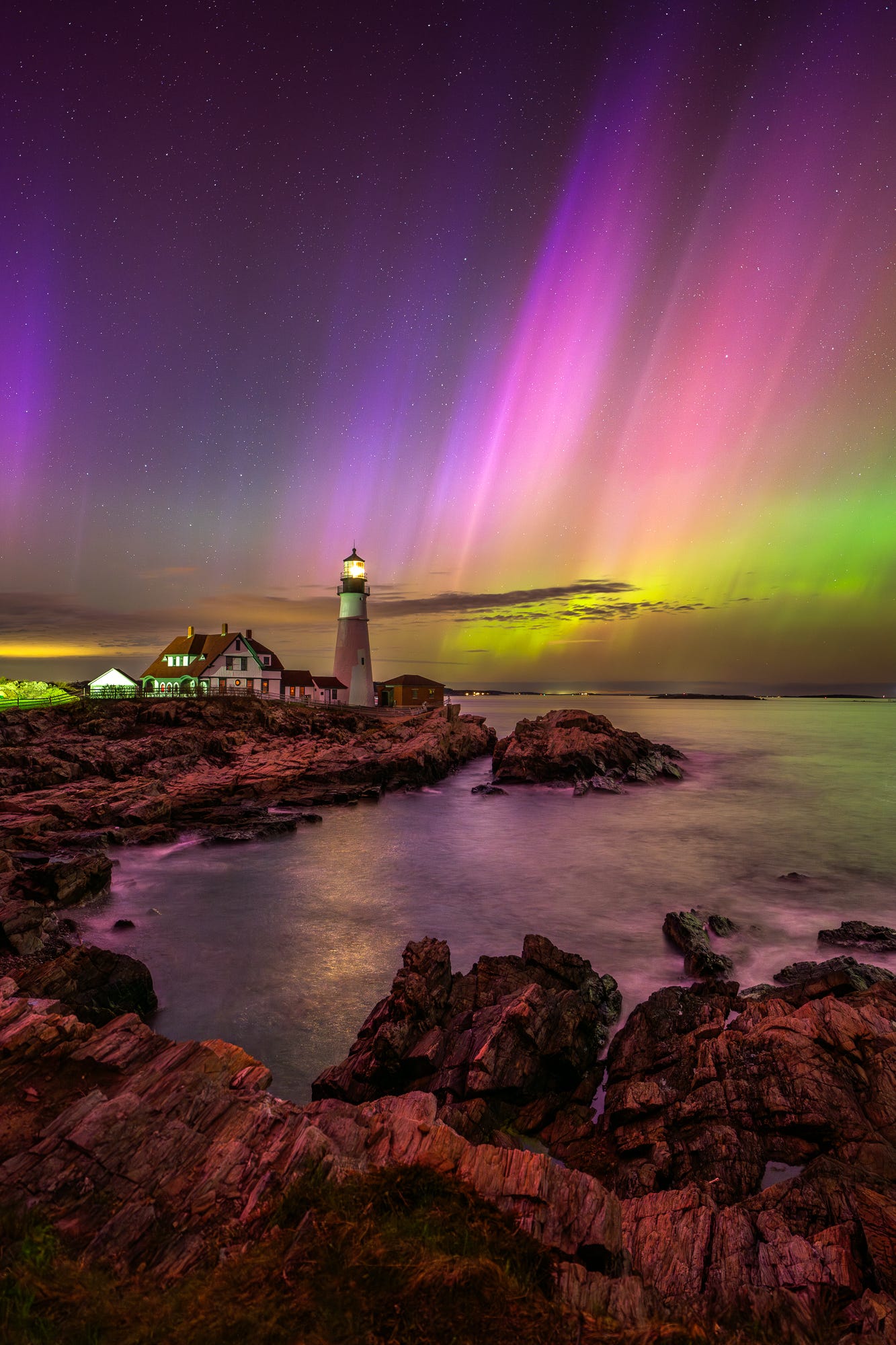
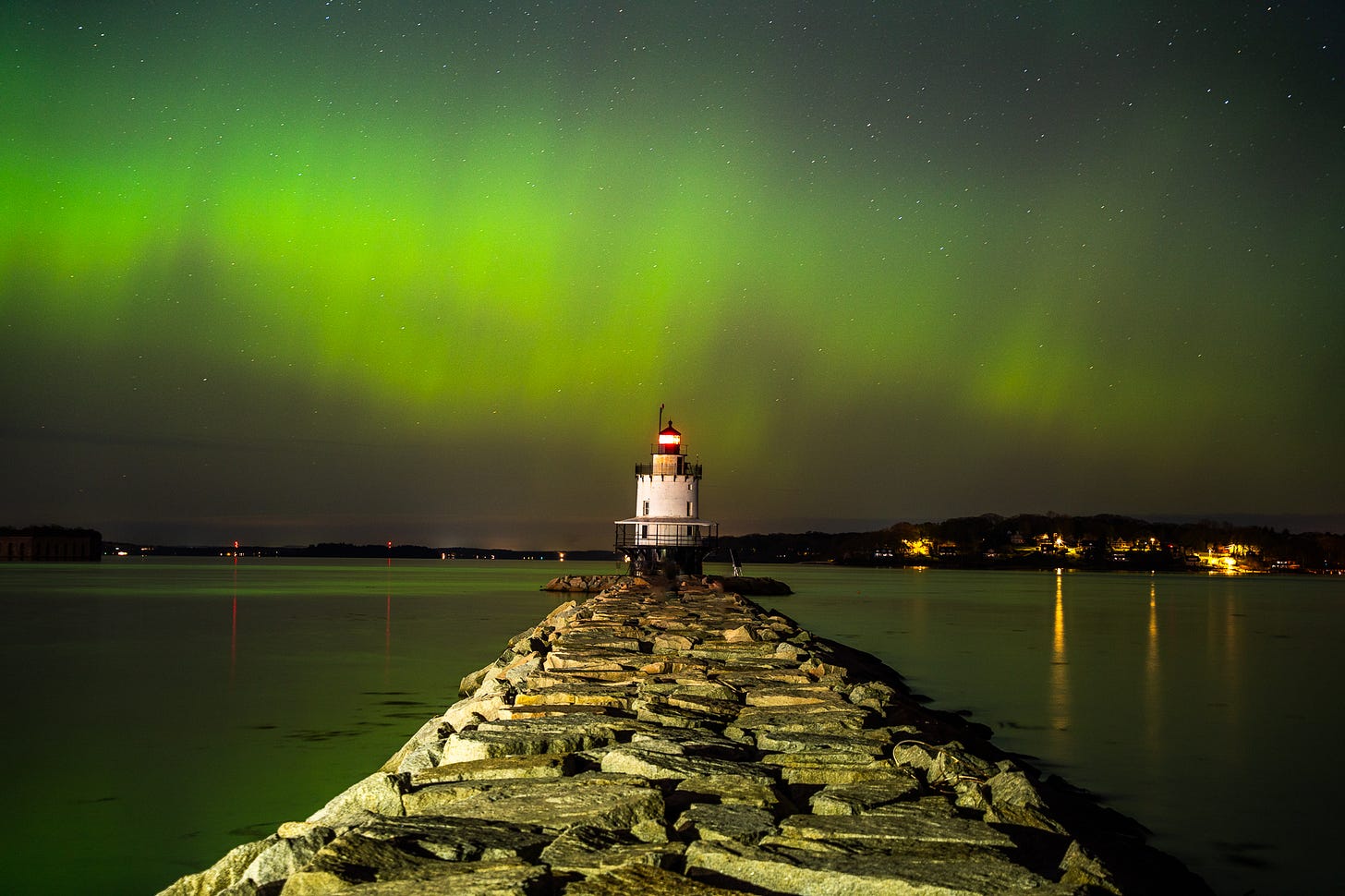
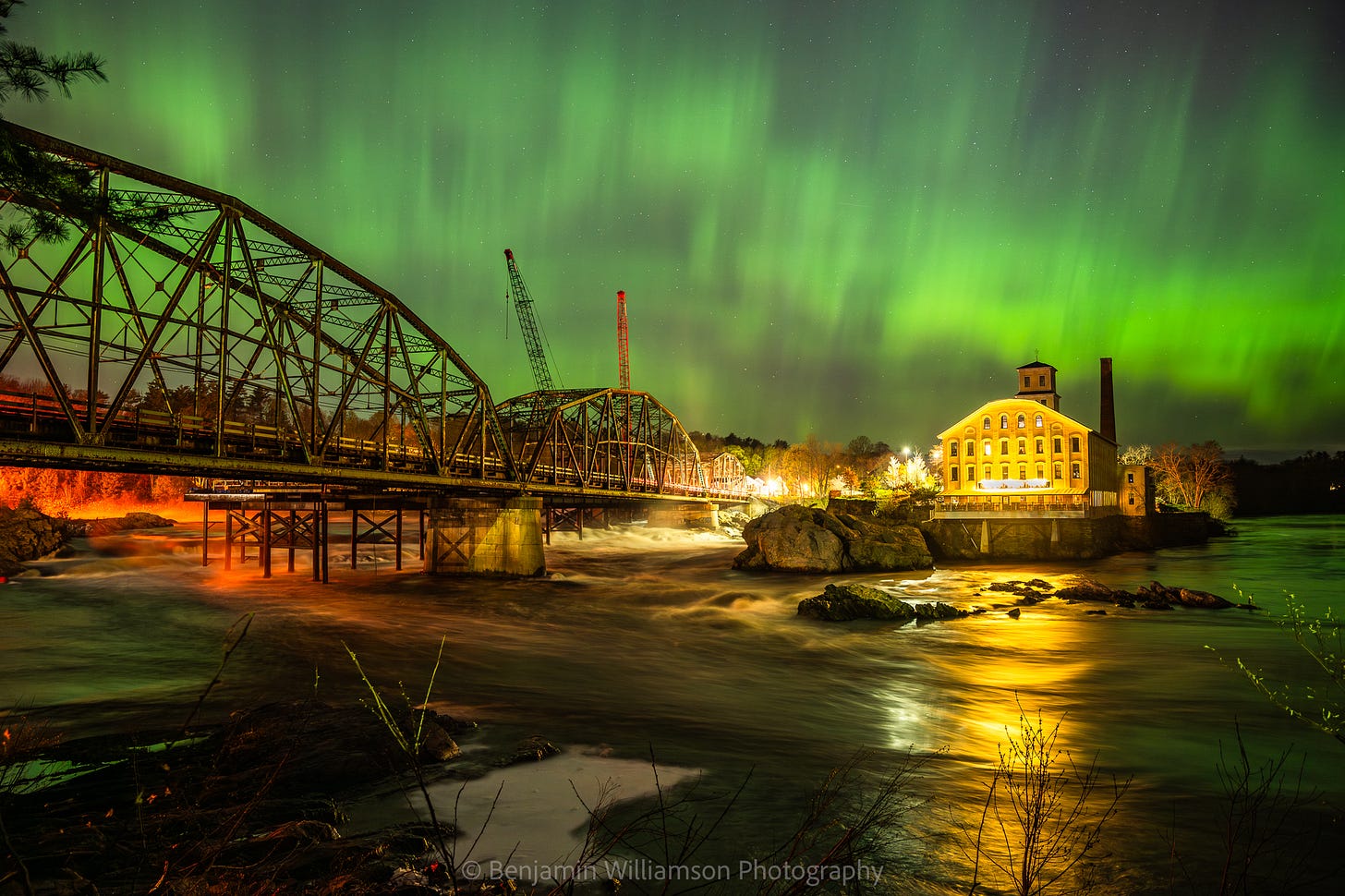
Epic captures. The aurora above the lighthouse is the best aurora image I've ever seen. Well done!
I love these photos so much! ❤ I'm a Maine girl living in Fairbanks, Alaska, where we see beautiful Auroras from August thru April every year. I never thought in a million years that I'd see the Aurora Borealis shining so bright and brilliant over my home state of Maine!! Thank you so much, Benjamin Williamson Photography, for capturing this amazing once-in-a-lifetime event! ❤